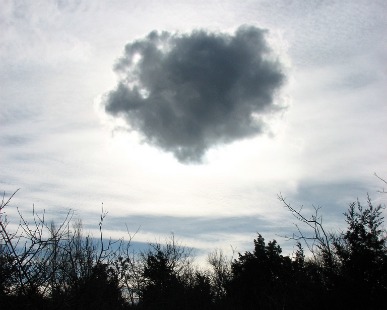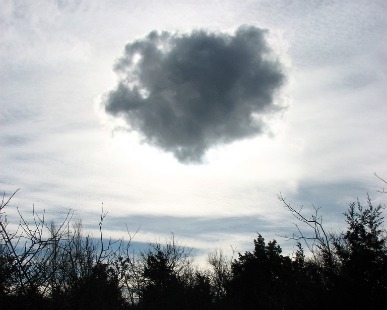 Tech companies have something hanging over their heads.Photo: The SharpteamAs I sit here at the Local 123 café in Berkeley on Earth Day, a dozen hipsters are transfixed by their Macbooks, their heads lost in the cloud.
Tech companies have something hanging over their heads.Photo: The SharpteamAs I sit here at the Local 123 café in Berkeley on Earth Day, a dozen hipsters are transfixed by their Macbooks, their heads lost in the cloud.
According to a Greenpeace report [PDF] released this week, all those presumably green and well-meaning digital workers-slash-slackers are contributing to global warming every time they update their Facebook status, scan their Twitter stream or check their Gmail.
That’s because all those apps live in massive data centers — a.k.a. “the cloud.” In the “How Dirty is Your Data?” report, Greenpeace analysts estimate data centers currently consume between 1.5 and 2 percent of global electricity production.
“Cloud computing is converting our work, finances, health and relationships into invisible data, centralized in out-of-the-way storage facilities or data centers,” state the study’s authors. “This report seeks to answer an important question about this trend, currently underway across the globe: As cloud technology disrupts our lives in many positive ways, are the companies that are changing everything failing to address their own growing environmental footprint?”
The report ranks operators of major data centers — Apple, Facebook, Google, etc. — according to a number of factors, including their source of electricity, i.e. whether the cloud is powered by coal, natural gas, wind, hydro, or other energy sources.
But before we get into the numbers, a big caveat: Tech companies guard their data-center data like state secrets, and Greenpeace is relying on what public information is available, as well as previous studies.
“Much of the information that would allow us to assess the net benefits of the cloud by also measuring the true environmental cost of these localized, power-hungry data centers is missing,” Greenpeace acknowledged. “This veil of secrecy makes it nearly impossible to measure the actual benefits of cloud technologies or understand the extent to which IT’s growing need for electricity is increasing the use of dirty energy.”
With that in mind, the rankings are not kind to Silicon Valley companies who like to cultivate a clean green image.
Greenpeace calls Apple the most dependent on coal to power its data centers, earning a 54.5 percent “coal-intensity” ranking and scoring only 6.7 percent on the group’s “clean energy” index.
Facebook, which has been the target of an ongoing Greenpeace campaign, was held to be the second most coal-intensive data-center operator with a 53.2 percent ranking.
Google, which this week invested $100 million in contracts to buy electricity from a wind farm to power a new Oklahoma data center, scored comparatively well with a 34.7 percent coal-intensity ranking and 36.4 percent on the clean energy index.
But rival Yahoo took the top spot for clean energy with a 55.9 percent ranking and an 18.3 percent coal-intensity score.
Given the secrecy surrounding data centers, these numbers are probably general indicators. But the real impact of the report may be to get our heads out of the cloud to start thinking about the down-to-earth impact of our virtual ways.



